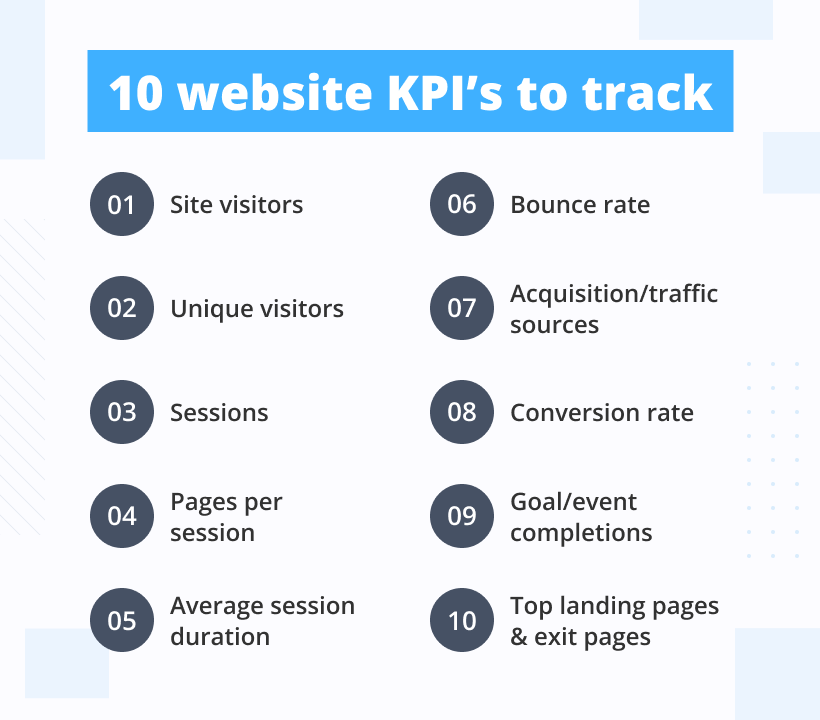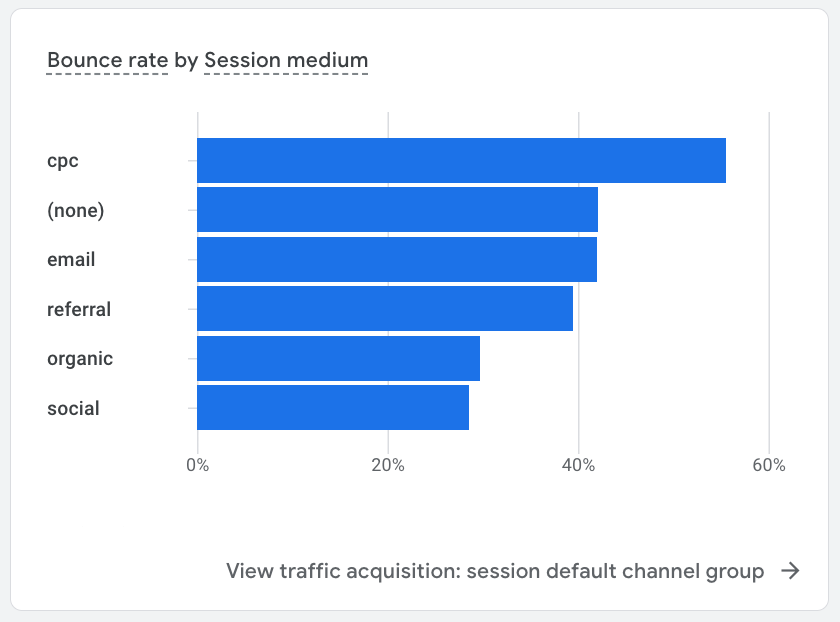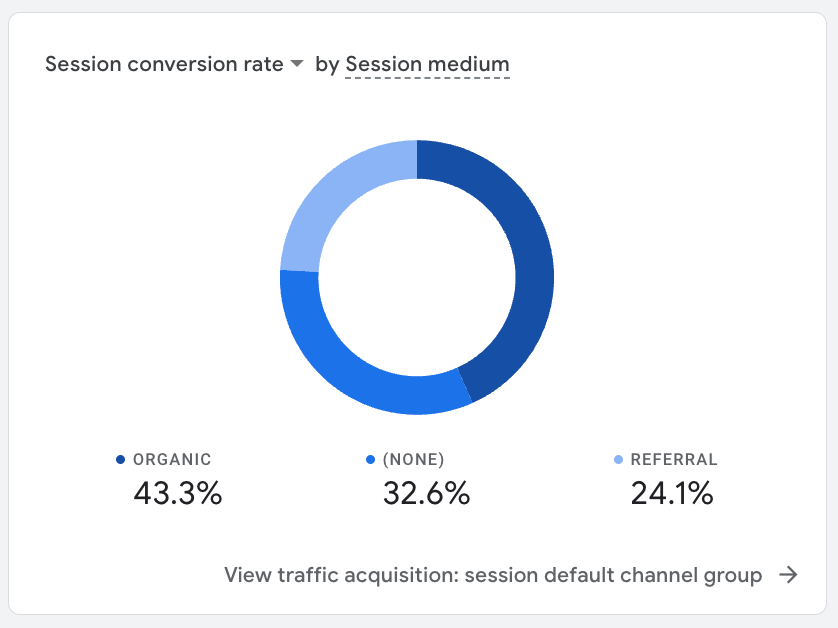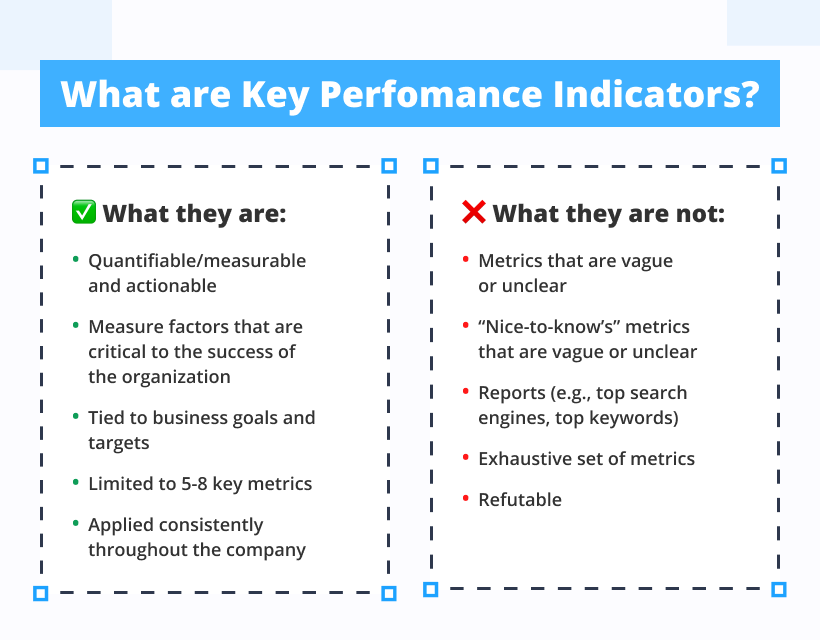Top KPIs for Website Traffic & Growth
As an online business owner, whether you are building a new website or redesigning and optimizing your existing one, it is important to ensure that you accurately know how well it is serving you. One of the best ways to do that is to track your website’s key performance indicators (KPIs) which help you understand how well your online platform is performing. For instance, imagine you are cooking in the kitchen and preparing a meal. You decide only to taste and check the final product you made and not while going along with the cooking process. There is a high possibility that you would be risking having a dry, burnt, or inedible final dish. In the same way, it is also essential to track and monitor your progress as you go along creating your online business and analyzing its performance. Before we dive into the top KPIs to track to boost your website traffic, let us first understand what they are.
What Are Website KPIs?
As we already mentioned, KPI stands for key performance indicators. It represents a measurable assessment of performance over a defined period for a particular goal. Website KPIs tie your online marketing efforts with your business goals and provide targets for you to aim for. It also gives your company milestones to gauge progress and offers insights to help your organization make better marketing and growth decisions.
Understanding Key Performance Indicators for Websites
Key performance indicators help every area of a business move forward at a strategic level. A glance at these metrics should tell you about your company’s impact from your marketing efforts. Besides impact and results, website KPIs also help:
- Measure the progress and success of your marketing strategies.
- Help you understand your shortcomings and accordingly tweak your strategy.
- Identify trends and analyze patterns over time.
- Give you a realistic image of your organization, ranging from risk factors to financial indicators.
We know it is hard to tell what analytics and marketing your business requires. Online platforms like Google give us a wealth of information, but we need to be able to differentiate and choose the ones that have the most impact on our business. If you use the wrong metrics for analysis it can be detrimental to the growth of your company. Since there isn’t a step-by-step guide for determining the proper metrics, it’s important to remember a few points. Your website KPIs should be:
-
Quantifiable: A quantifiable KPI is straightforward and leaves no area of doubt. It shows the exact result of your work backed by hard numbers that are easy to interpret. They could be the number of downloads, clicks, or website visitors.
-
Actionable: The KPIs you select must offer actionable insights that enable you and your organization to make informed decisions. For example, if you are looking to improve your website engagement, then identify solid metrics that indicate audience interaction with your website. They could be anything from chat conversations to clicking on your call-to-action (CTA). If you are not happy with your results, then you can always make your CTAs more clickable and your messaging services resonate better with your web page visitors.
-
Aligned with your organization’s goals: There are lots of metrics that go into the details of your customer's interactions. But only a handful are directly tied to the bottom line of your business. These are the most impactful website KPIs. For instance, it’s common to track the traffic on your website, but it’s even more essential to monitor how much of that traffic converts to leads.
Importance of Tracking Website Metrics
One of the best ways to track your website metrics is Google Analytics. It is a free platform that gives you insights into your website traffic and digital marketing effectiveness. It can be used to track your KPIs and assess which areas of your online platform are performing well and which areas need improvement. Google Analytics helps you track the number of visitors to your site, how they found your site, what pages they viewed, how long they stayed on your site, and what actions they took while there. When used well, the information collected is a goldmine of data that can help you understand what is working and what isn’t, so you can optimize your website KPIs for future success.
The importance of tracking and measuring metrics for your website does more than just reassure you. If monitored and optimized correctly, website metrics will:
- Lead your business towards a growth trajectory.
- Help you make more informed and calculated decisions.
- Highlight your problem areas, so you can focus on improving them.
- Provide you with real-time business data, that in turn gives you a holistic view of your business.
- Increase your website traffic and enable conversions.
These are just a few of the advantages of tracking website KPIs. The overall growth of your company depends on your business’ purpose, targeted marketing, and your desired direction, which are subject to change. As long as you use the right metrics and aim toward optimization, your organization's growth is guaranteed.
Top 14 Website KPIs to Track
Now that you have a better grasp of website KPIs, let us dive further into them to help you evaluate your online platform’s performance. But like everything else in marketing analysis, there are no one-size-fits-all metrics that you can quickly look up online. You need to determine on your own what suits your business based on its specific industry, size, objectives, and other factors. While it might be difficult to narrow down all the website KPIs, some metrics matter more than others, and you will see that some are commonly tracked by experienced marketers for analysis. So, here are the 10 most important engagement metrics to monitor and implement in your web strategy.

1. Acquisition
Acquisition metrics comprise a set of KPIs that give information about the traffic you have received on your online platform. It gives you an idea of how users are arriving at your website and how effective your overall marketing campaigns are at attracting visitors. The acquisition metric helps answer questions such as:
- Where do my website visitors come from?
- What sources bring in the most traffic?
- What is the engagement like on my company landing web page?
- How many potential customers convert into consumers?
Businesses can easily find this information under the Acquisition tab on Google Analytics. A deep dive into this KPI metric can help to identify which channels are performing the best among your audience and which ones you either need to invest more in or eliminate. Some of the top acquisition metrics that you should track to get a thorough understanding of your website’s performance are:
- Traffic Sources
- Unique Visitors
- Organic Traffic
- Top Landing Pages
2. Traffic sources
The goal of any online business is to drive qualified traffic to its website. One of the key ways to achieve this goal is to track and monitor the different sources of your visitors. By doing this, businesses can better understand which marketing campaigns to focus on to get the best results. Traffic sources are a part of acquisition metrics, and they measure the channels that drive visitors to your website. Some of the examples of traffic are:
- Direct: Visitors who typed in your URL and directly landed on your web page.
- Organic: Traffic that originated organically from search engines as a result of your SEO strategy.
- Email: Audiences you received from your email campaigns or other email marketing efforts.
- Social: Traffic from social media platforms such as Facebook, Twitter, LinkedIn, etc.
- Referral: Visitors who are referred by backlinks to your platform, such as blogs, review websites, etc.
By monitoring this KPI for websites, you can know which sources are working well for you and additionally invest more in those channels to grow your audience base. For more information on different traffic sources please refer to our article on the 6 types of website traffic you need to know.
3. Sessions
A session is the period a user is actively engaged with your website. It represents a set of activities the visitor performs on your web pages during a certain period of time. For instance, say a visitor lands on your blog, clicks on a few related articles, and even downloads your newsletter, this entire interaction is considered as one session. The session time starts right after a user enters your website and ends after 30 minutes of inactivity. If the same visitor comes back after a few hours or days, it is considered a separate session. In other words, a single user can contribute to multiple sessions.
This KPI metric is calculated by taking the total number of sessions in a specific time and dividing it by the number of users in that time. Tracking this KPI is very helpful in evaluating if your marketing strategy is engaging enough for your prospects to return. Some of the benefits of monitoring sessions are:
- It allows you to see what’s working in your PPC, SEO, and marketing efforts.
- It helps identify and analyze target audience behaviors and habits.
- It gives a clear picture of the user’s journey.
- It aids in identifying why people leave your website, which can be due to various reasons, such as bugs or errors.
4. Pages per session
Pages per session is the average number of web pages that a potential customer has visited in a session. For instance, if a prospect lands on your blog web page organically and then clicks on a related article that you have placed on your blog, then the pages per session for this visitor would be two. This KPI allows business owners to track their overall website engagement and whether a visitor finds their content interesting and helpful. If you see that a user is spending a lot of time on a single web page, then you know that the information on that page is likely very informative and valuable to them. However, if you see that a visitor is bouncing around your website and not sticking around for long, you know that your content isn’t engaging, and you need to improve it to give customers a more satisfying experience.
Some of the things we can learn from the pages per session KPI are:
- The content provided on the website is engaging and relevant to audiences when the metric is high.
- On the other hand, if the number is high on checkout web pages, then it means that there are some errors or bugs that need to be fixed.
5. Bounce rate

After sessions and pages per session, one of the most important KPIs for website traffic is bounce rate. It is the percentage of visitors who bounced off your website immediately after entering or without taking any action. In simple words, it means that your advertisements and marketing efforts got your potential customers, but they weren’t engaged enough to stay. Tracking bounce rates can help organizations learn how their users interact with specific web pages on their websites. It is a very important metric as it shows you if your sales funnel has serious flaws that need to be addressed. A high bounce rate can mean that your website is not user-friendly and that you need to correlate your keywords to your content better. A typical bounce rate should be between 40-50%. A SEMrush study indicates a correlation between bounce rate and SERP ranking as well.
6. Average session duration
Average session duration is the average time a user spends on your website during a single session. It is one of the best indicators of your website’s engagement with its audience. This KPI metric is different from sessions as it tracks the average time per session and not the number of sessions in a given period of time. It helps a business understand how engaged their potential clients are with their web pages. For instance, if a user spends most of their time on your product web page, then you know that they are likely interested in the goods you are selling. In the same way, if a client is spending time reading your blogs, then you know that they are searching for information to better educate themselves about your industry. But if there is a mixed bag of product and content web pages engaged during a session, then such a customer is likely trying to know your brand and is easier to convert into a consumer.
7. Page speed/load time
It has been researched that 53% of users will abandon a website if it takes more than three seconds to load. Your online store needs to load quickly to deliver helpful information to your audience. If you want to measure your website’s performance, tracking your web page speed or load time is crucial. It is the average amount of time it takes for a website to appear on your potential client’s screen. One way to track this KPI is by using Google Analytics. You can observe the load times for individual web pages and gain insight into how these websites are performing. This in turn can help you improve your overall customer experience. Generally, people will spend more time on websites that load faster, which sends a positive signal to search engines like Google and Yahoo, that your web page is relevant. As a result, your website can gain a higher SERP ranking and generate more qualified traffic.
8. Dwell time
Dwell time is a measure of how long it takes for a visitor to return to the SERP results after clicking on your website. In essence, it determines the time spent by a user on your web page before getting back to the search engine results. This KPI primarily shows how engaged your customers are with the content they are seeing and whether it meets their expectations and needs. When a person enters your landing page, they quickly scan to see if they find your content valuable or not. If they find what they are looking for, they will then spend more time on your website. But if they do not find the required information, they will instantly go back to find another website. Search engines use this factor in their algorithm to determine your ranking on their SERP. A few ways in which a business can improve its dwell time are:
- Creating valuable and quality content resonating with your target audience.
- Improving the readability of your information.
- Aim to educate your consumers rather than just selling.
- Using engaging visuals such as infographics, images, etc.
- Improve your web page loading time.
9. Number of leads
The word “leads” represents people or businesses who are interested in your company’s product. By nurturing them and tapping into their curiosity, you can convert them from potential customers to consumers or even repeat clients. There are primarily two types of leads based on their qualification to be an ideal user.
- Marketing qualified leads (MQL): As the name suggests, MQLs are the leads who have entered your sales funnel through the various marketing activities and advertisement campaigns by your company. They are generated by your marketing teams with content related to your business, such as e-books, checklists, or newsletters. When such a lead displays sales-ready behavior by visiting the product web pages or engaging with your case studies, they are qualified and should be passed on to your sales team for conversion.
- Sales qualified leads (SQL): SQL are the prospective buyers whom your sales team has verified as buy-ready. One of the popular ways to identify SQLs is the BANT framework. It involves asking questions to your customers so that you understand if they have the Budget, Authority, Need, and time frame to buy from you.
Leads are your future potential customers and without them, your business will lack a customer base and won’t be able to grow sales. Some of the quick ways to generate and convert qualified leads are:
- Lead magnets: Creating and promoting online materials like blog articles, forms, videos, etc. that would stir your prospect’s curiosity. This will help you acquire the contact information of the target audience.
- Email marketing: Send personalized and promotional emails to the leads you have collected through campaign activities. This helps nurture them into buying from your brand.
- Customer referrals: This is one of the best sources to generate new leads and aid in conversion. If your existing happy customers recommend a client, the chances of them being more accepting of your product are higher.
- Search engine marketing (SEM): This is a digital marketing strategy that involves paying to get your website to rank at the top of the SERP. It is an effective strategy to quickly spread awareness about your new product or services and generate qualified traffic.
10. Conversion rate

Generating heavy traffic and getting people to visit your website, whether from organic sources, a Google advertisement, or some other marketing method, is good for your business. However, the true test of your success depends on the users’ engagement with your brand, so they do not bounce back out before a conversion is made. This is where the conversion rate metric comes in. Conversion rate tells you what percentage of visitors convert from being a potential customer to a consumer. This KPI is critical for tracking your website’s ability to grow revenue. The higher the percentage of your conversion rate, the more successful your online business is. While monitoring this metric, it is essential for businesses to also know how much your visitors are spending on your product when they are converting. If you have a high conversion rate, but the dollar amounts are low, you can do better, and vice versa.
11. Unique Website Visitors
A unique website visitor is an individual who has never seen your website or somebody who hasn’t been to your web page within a given time. It is an important metric to watch as it gives insights into how well your online content and overall website are performing. If you have a high number of unique visitors, it means that you are reaching out to a lot of new people. By observing this parameter a business can find out:
- How popular is their website?
- Where are the issues that are hindering their platform’s performance?
- What is the size of their target audience?
- How do users engage with the website, and what are their habits?
- What is the ranking of their online store in search results?
Some of the top ways to increase this KPI are:
- Creating more content with targeted relevant keywords.
- Monitoring your website’s loading speed and looking for ways to optimize it.
- Running paid traffic advertisements.
- Utilizing influencer marketing strategies.
- Improving your on-page and off-page SEO elements.
12. Goal Completions
Goal completions are primarily conversions that you want your target audience to complete, such as signing up for a newsletter or making a purchase. It is a KPI that counts the number of users who fulfill a specified objective or series of goals on your website. Goal completion and conversion rate are similar metrics that serve the same purpose of tracking when users perform actions that are crucial to your company. But there is a difference between the two – conversion rate pertains to desired actions that need to be completed by a customer, while goal completion is the total number of visitors who have completed all elements defined for a particular goal. The distinction between the two is: the first is for all objectives combined, while the second is clearly for the accomplishment of a single goal. Goal completion is an important metric because:
- A good goal completion rate demonstrates that your marketing campaign works and motivates your target audience to take action.
- It indicates that your growth strategies produce high-quality leads for your sales team to work with.
- It helps you measure the success of your sales funnel.
- It provides valuable insights into the quality of your marketing policies.
13. Top Landing Pages
Top landing pages refer to the first pages that customers see when they visit your website. This can be your home web page, an optimized blog home web page, a company’s product web page, or any other web page that your business deems as its landing website. In Google Analytics, the top landing pages are the web pages that receive the most traffic volume on your website. Google uses several factors to determine this, including the number of visitors, the number of views, and the amount of time spent on the web page. It is a crucial metric for determining the success of your platform. Top landing pages are an important KPI as they provide an ability to review your landing web pages, help you examine the way visitors move through your conversion funnel, and can be used to increase sales and overall ROI by optimizing your website.
14. Organic Traffic
Finally, we come to our last and important KPI metric – Organic Traffic. It is the most desirable type that every business strives to increase with the help of inbound marketing. Organic traffic refers to the users or customers who find your website organically through different search engines, such as Google, Yahoo, etc. by searching for keywords relevant to your product without being influenced by paid advertisements. In the long run, this type of traffic is most beneficial for any organization as it is earned and not paid for. This ensures a higher chance of getting qualified leads and better sales conversion. Incorporating an effective SEO strategy and good content management can help your website rank higher in SERPs and improve your brand’s visibility. Some of the benefits of organic traffic are:
- It generates higher customer trust.
- It increases brand awareness.
- It is the most cost-effective marketing tool.
- Higher conversion rate.
- It improves brand loyalty.
- ROI (Return on Investment) is higher than any other traffic.
If you would like to know more about the advantages of organic traffic over paid traffic, please refer to our article on the difference between organic and paid traffic.
Conclusion - Key Takeaways

The website KPIs examples we just described are very helpful in understanding how your visitors engage with your online business. They are vital in developing and improving your website and increasing traffic. It can be a little tricky to decide which KPIs concern your business directly as there are so many of them to choose from. But if you can understand the “why” behind each website KPI, it will enable you to draw logical inferences and create better strategies to optimize your website. Tracking and analyzing important KPIs regularly will help you build an attractive online store for your brand that will enable free-flowing qualified leads and positively impact your revenue.



